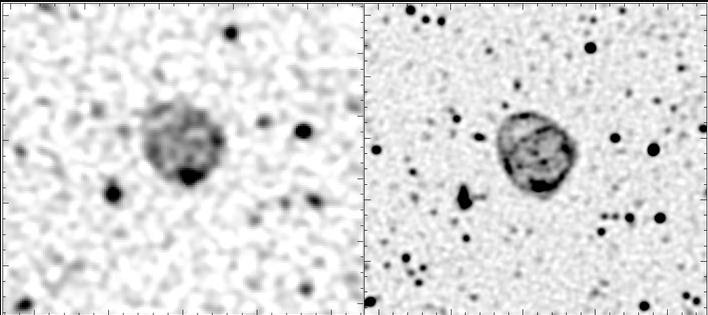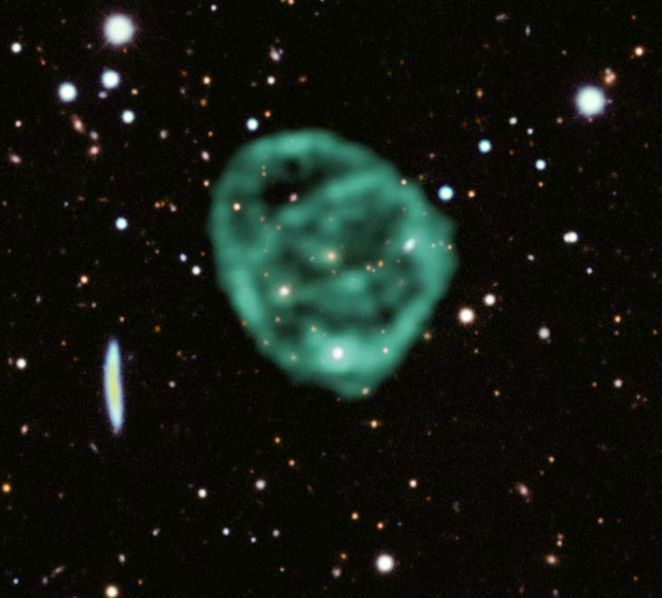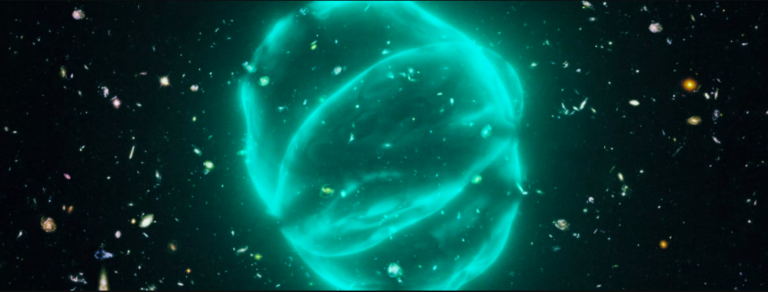LOOK: STUNNING NEW IMAGES SHOW DETAILS OF MYSTERIOUS DEEP SPACE RADIO RINGS
ASTRONOMERS have just given us our best image yet of the mysterious space rings called odd radio circles, or ORCs for short. The image, compiled from data from South Africa’s MeerKAT Radio Observatory, is a much crisper look at a weird cosmic phenomenon that was discovered only last year.
The most recent look at ORCs, published in Monthly Notices of the Royal Astronomical Society uses the more-powerful MeerKAT telescope to zoom in on one in particular. The resulting image gives a much more detailed look at the ORC, and lets astronomers see some of the complex structures inside it. The ORC, which surrounds an elliptical galaxy, has what appear to be multiple rings inside the main structure, and some regions that are brighter than others. Those new insights could give us clues as to how ORCs form, and what they’re made of.
ORCs aren’t the hobbit-hunting beasties you might be thinking of — the acronym is actually pretty accurate. ORCs are huge circular-looking clouds a million light-years across that emit only radio waves — the lowest-frequency type of electromagnetic radiation.

“We know ORCs are rings of faint radio emissions surrounding a galaxy with a highly active black hole at its center, but we don’t yet know what causes them, or why they are so rare,” Ray Norris, a professor at Western Sydney University and co-author of the paper, said in a press release.
Their visibility in just the radio spectrum is one of the weirdest things about these giant rings. Astronomers have found other big, circular things in space that look broadly similar to ORCs, but most of them can be seen in multiple wavelengths, including gamma ray, visible light, and infrared. The Fermi bubbles that extend out from the center of our own Milky Way, for example, and which might be the remnants of massive jets from our galaxy’s central black hole, can be seen in both gamma rays and radio waves.
But ORCs are completely invisible unless you’re looking for them with a radio telescope. That might be why astronomers have seen just five of them so far. ORCs turned up for the first time in data from a huge radio survey of the sky — the Evolutionary Map of the Universe study from the Australian Square Kilometre Array Pathfinder (ASKAP) telescope.
The new images are already unlocking some of the secrets of these objects. What looks like a flat ring to us might actually be a 3-dimensional sphere, the astronomers say. That could represent the shockwave from an ancient, cataclysmic collision within the galaxy, like that from the merger of two supermassive black holes. Such an event would blow a superheated cloud of debris and gas outward, which would be visible for millions of years.
ORCs could also come from a galaxy that’s forming lots of stars, a so-called starburst galaxy. Star formation generates powerful stellar winds that sweep outward and can form bubbles. The ORCs might be the termination shock, essentially the point at which the bubble stops, of these winds.

Still another theory holds that ORCs aren’t spheres at all, but instead the ends of massive galactic jets from radio galaxies seen end-on. The supermassive black holes at the centers of galaxies emit streams of particles from their centers as they suck up material, and some of that material gets ejected in huge jets that can extend for millions of light-years out into space. Radio galaxies emit most of their radiation as radio waves, and ORCs might just be the remnants of these galactic jets.
In a more outré take, some researchers have suggested ORCs might even represent the throat of a wormhole, a theoretical shortcut through spacetime. The jury on that hypothesis is definitely still out, though.
While just five ORCs have been reported in scientific papers, the scientists note that a few more candidate ORCs are currently being studied. With more examples to look at, and more detailed data hopefully coming in the future, we may soon know more about these huge rings in the sky.
Do not forget to share your opinion with us to provide you with the best posts !




0 Comments